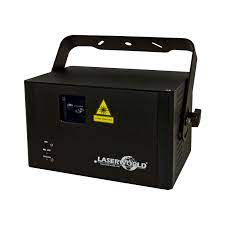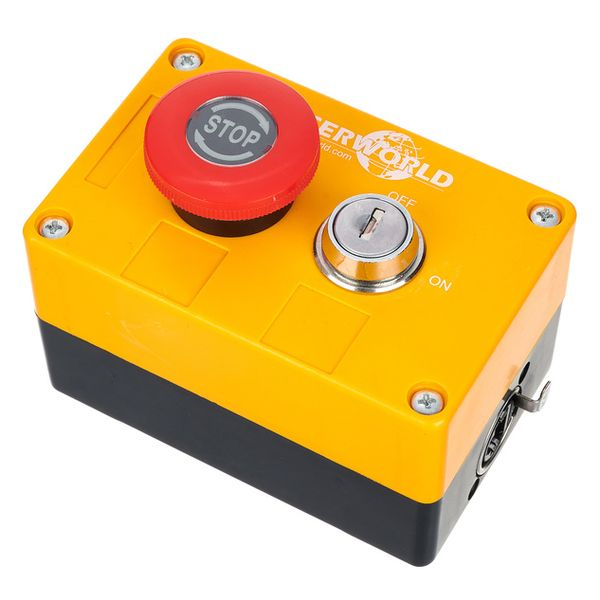(Show) Laser
What is a laser?
Laser stands for Light Amplification by Stimulated Emission of Radiation.
A laser is a device that projects a highly concentrated narrow beam of light which is amplified to great brightness using stimulated radiation.
A show laser is a device that projects changing laser beams on a screen to create a moving image. A laser projector may contain one laser light source for single-color projection or three sources for RGB (red, green, and blue) full color projection.
To compare:
Projection video from a regular (laser)projector is sent in a fixed resolution, with al those pixels simultaneously (beam). Projection from a showlaser is 1 pixel at a time, but so fast that our eyes perceive a picture (for the HKU laser this is up to 65000rps).
Both show lasers and projector beams are used for visual displays, but they operate on different principles and have distinct characteristics:
-
Show Laser:
- Principle: Show lasers use the process of stimulated emission of radiation to produce coherent light. They typically use a medium such as a gas, liquid, or semiconductor to generate laser light.
- Light Source: Show lasers use lasers as their light source. These lasers emit highly concentrated light beams with a narrow wavelength range.
- Beam Quality: Show lasers produce coherent beams of light with high brightness and sharpness. They are capable of creating intricate patterns and shapes with precision.
- Color Options: Show lasers can produce a wide range of colors by using different types of lasers and by modulating the intensity of the laser beams. They are commonly used in laser light shows, concerts, and entertainment events.
- Safety Considerations: Show lasers require careful handling due to the potential hazards associated with high-intensity laser beams. Safety precautions, such as beam attenuation and audience scanning limitations, are essential to prevent eye injuries.
-
Projector Beam:
- Principle: Projector beams use conventional light sources, such as incandescent lamps, light-emitting diodes (LEDs), or laser diodes, to generate non-coherent light. The light is then focused and directed onto a surface using lenses and mirrors.
- Light Source: Projector beams use non-coherent light sources, which emit broad-spectrum light with various wavelengths.
- Beam Quality: Projector beams produce diffused light with less coherence compared to lasers. While they can still create detailed images and videos, the quality may not be as sharp or precise as that of show lasers.
- Color Options: Projector beams can also produce a range of colors by using color filters or by mixing different color light sources. However, achieving certain colors or color transitions may be more challenging compared to show lasers.
- Applications: Projector beams are commonly used in multimedia presentations, movie theaters, and home entertainment systems. They are versatile and can project a wide variety of content onto screens or surfaces.
- Safety Considerations: While projector beams do not pose the same laser safety hazards as show lasers, precautions should still be taken to ensure safe operation, such as proper ventilation for heat dissipation and avoiding direct exposure to the eyes.
In summary, show lasers and projector beams differ in their underlying technology, light sources, beam characteristics, color options, applications, and safety considerations. Show lasers excel in producing coherent, high-quality light beams for artistic and entertainment purposes, while projector beams offer versatility and are more commonly used for general projection tasks.
LASERS ARE DANGEROUS - DAMAGE TO YOUR OR THE AUDIENCE’S EYE SIGHT IS A VERY REAL RISK
If you plan to use lasers
- Understand all the laws and regulations for laser operation in your area.
- Become a certified Laser Safety Officer (this is required by law in some areas). Courses are available from ILDA directly: ILDA Laser Safety Courses 10
- Make sure an emergency stop button is close to you at all times.
- Do not let anyone enter the laser projection area unless all precautions have been taken to limit the output.
- Make sure there are no reflective surfaces in the projection area that might cause the beam to reflect unintendedly.
Laser classes
Below is a a figure and sheet with risks and precautions for different laser classes:
source: https://www.lasersafetyfacts.com/laserclasses.html
Available to borrow at Blackbox JK after a safety instruction:
Laserworld CS-1000RGB (manual)
 |
 |
A powerful semi-professional analog modulated pure diode laser, capable of intense standard laser effects like beams, waves and tunnels but also basic graphics. This laser has easy plug and play, sound-to-light and stand-alone modes, DMX control, so it can be controlled with the rest of your lighting, but also has an ILDA port for professional computer control.



